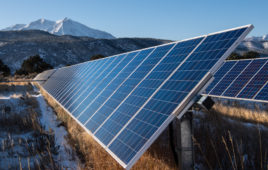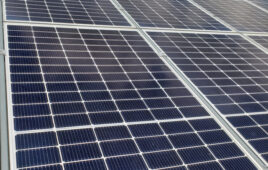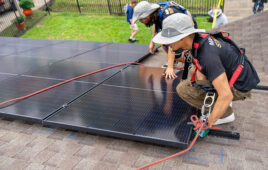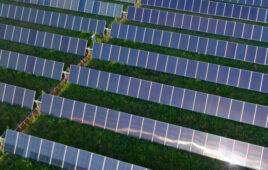Borrego announced it has completed construction on 15 solar + storage projects in Massachusetts and New York for AES Corporation. The solar installed across the projects totals 96 MW, while the storage portion totals 169 MWh, representing Borrego’s largest storage portfolio built for one customer to date.
The solar + storage systems range in size from 1.6 MW to 12 MW (solar) and 1.7 MWh to 17 MWh (storage).
The projects are among Borrego’s first DC-coupled solar + storage installations. The DC-coupling technology enables the solar arrays to generate up to 30% additional annual energy output for the same interconnection cost as they would have without storage.
These projects benefit the asset owner by taking full advantage of renewable energy state incentives, the utility by storing co-located solar system energy and community energy users as most projects are community solar. They also represent a variety of use cases, such as minimizing system peak demand through the Solar Massachusetts Renewable Target (SMART) program, maximizing the time-value of the plant’s energy production under the NY Value of Distributed Energy Resource (VDER) tariff, and enabling wholesale market participation.
“Being an early adopter of energy storage and solar + storage technologies has not been without its challenges, but the completion of the AES portfolio has made it all worthwhile,” said John duPont, VP of solutions at Borrego. “We collaborated with our product partners for years to develop and test the DC-coupled system hardware and energy management system controls that will enable these plants to deliver more solar generation per facility than was previously possible in this market.”
News item from Borrego





“The projects are among Borrego’s first DC-coupled solar + storage installations. The DC-coupling technology enables the solar arrays to generate up to 30% additional annual energy output for the same interconnection cost as they would have without storage.”
Interesting, this D.C. series type of solar PV to ESS allows for the design to grab overgeneration and be able to time shift up to another 30% energy to later in the day without having to “curtail” the solar PV farm to help regulate the grid voltage and frequency. Now the next step is something like a single axis tracking east to west solar PV farm orientation, using 2 to 1 D.C. to A.C. buss into a large redox flow battery facility. Depending on generation load requirements one could have a 24 hour generation facility or have enough capacity to run say 8 hours during the day and still have some reduced capacity to handle overnight energy needs on the grid without standby fueled generation. With redox flow battery technology, one could also capture all solar PV generation during the day and use the stored energy for night dispatch to the grid. One can design for daytime solar PV or night time solar PV dispatch.